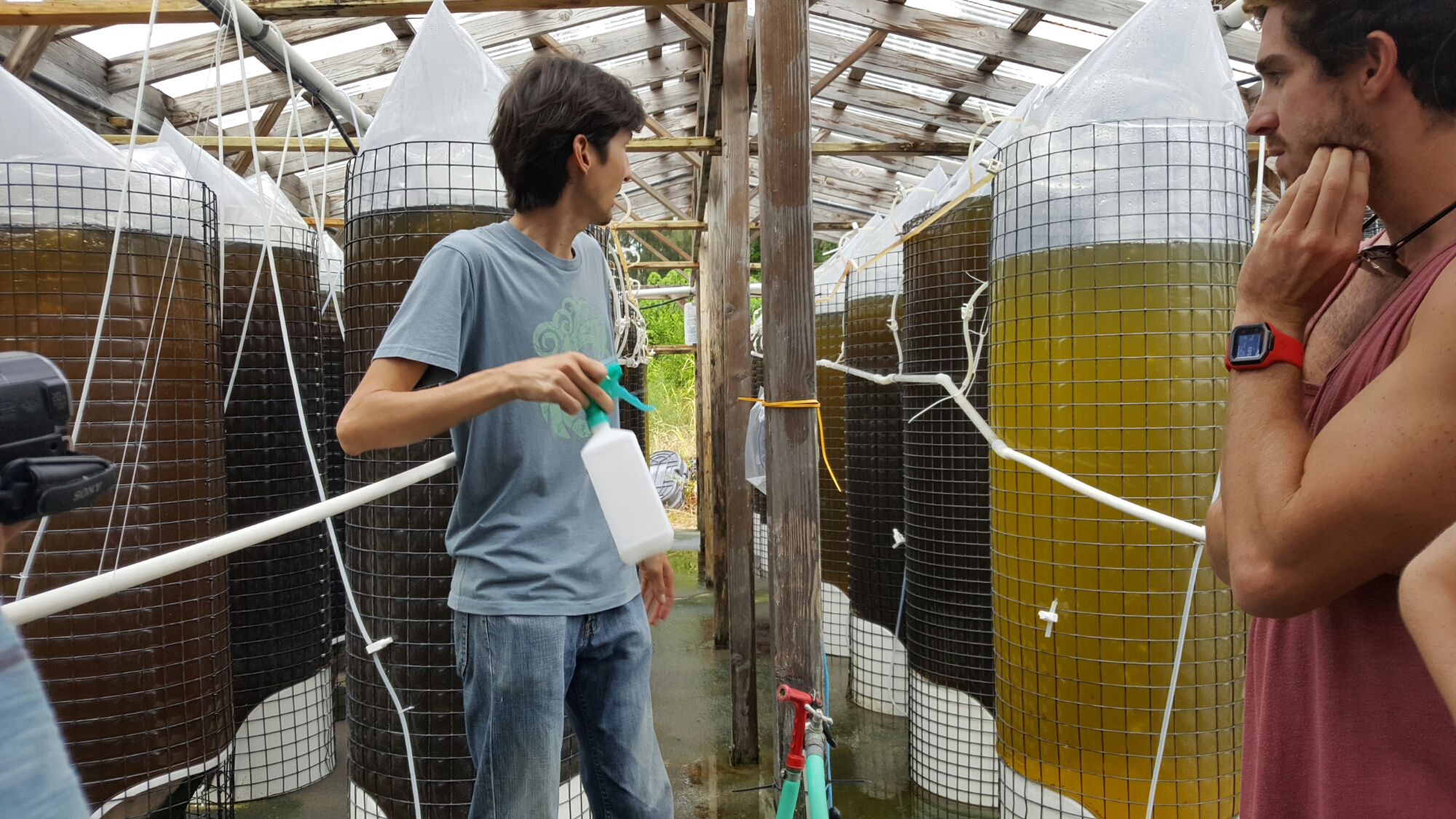We started off our tour at the aquaculture center with a small plankton workshop. Here we had three different groups of four people. There were 4 different beakers filled with different organisms which we had to identify ourselves under a microscope and identifying manual.

This was interesting because each organism was different and moved underneath the microscope. Next we looked at a sustainable system where fish waste was used to water plants and the only thing being input was water to increase the water supply of the fish. Here we can see it is sustainable because the plant system did not need any extra water, only what was given off from the fish product.
After learning about the different Zoplakton used as feed, we were shown how the center maintains its oyster aquaculture. Spat (pictured below) are young oysters that are harvested to later be shipped and marketed to a large consumer industry. The center holds a series of tubs that mimic habitat for oyster larvae to grow. After thousands of larvae are broadcasted, in the end not all survive to full growth.
To feed these oysters, algae is also harvested. In large plastic bags water is pumped to keep particles suspended and able to grow as much red, green, and brown algae as possible. It’s important that these bags be properly maintained each day to make sure there is no algal settling or contamination of any organisms that could consume all of the algae.








Leave a Reply